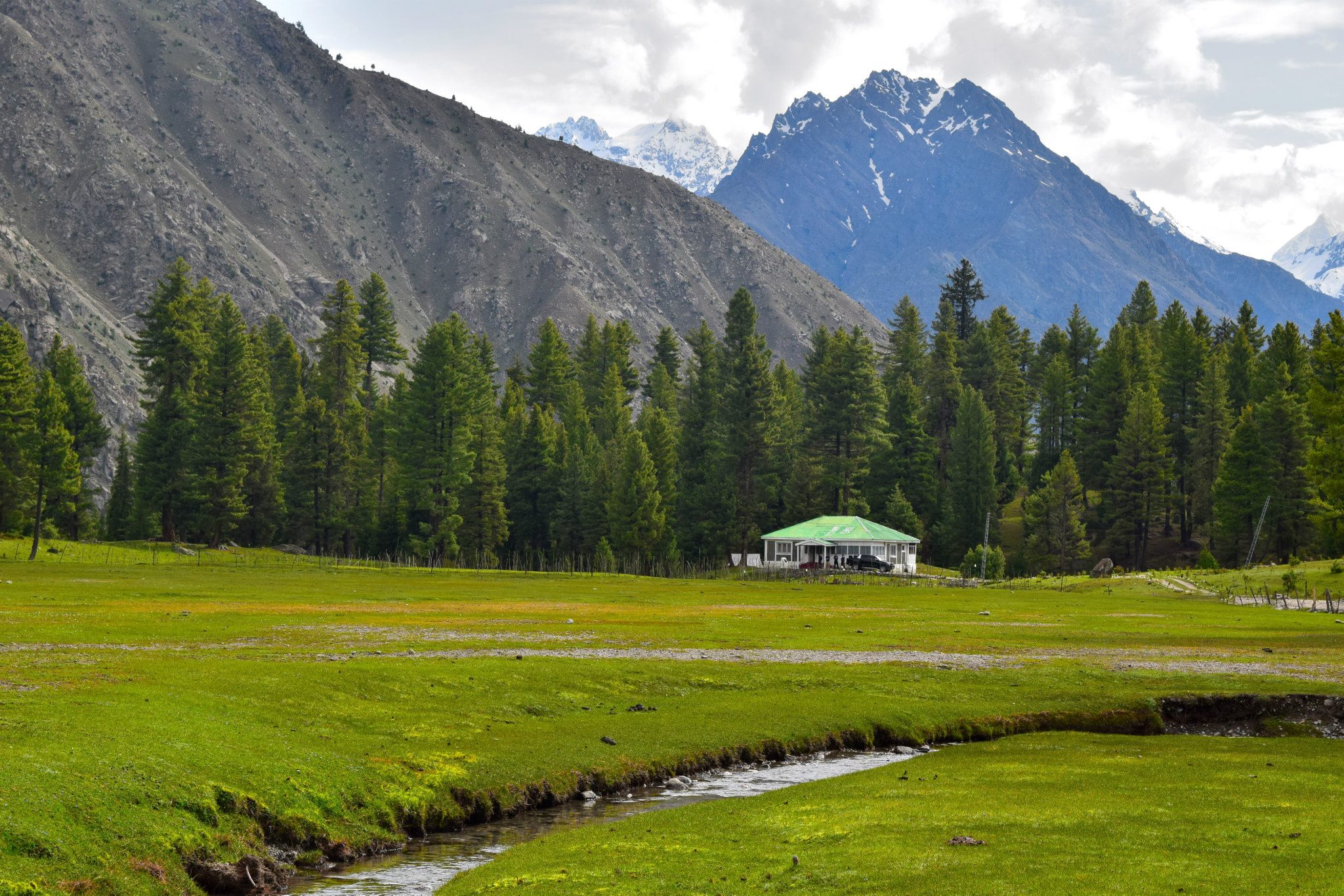Pakistan is a country blessed with varied landscapes and climates, which make it ideal for cultivating a wide range of crops. Agriculture is not only the backbone of the economy but also a way of life for millions of people across the nation. With terrains that range from the fertile plains of Punjab to the arid zones of Balochistan, each region contributes unique crops to Pakistan’s agricultural portfolio.
This blog explores the different agricultural regions and key crops that grow in Pakistan, offering insights into the connection between the land, climate, and the types of produce that each area brings forth. Whether you’re interested in the famous wheat fields, cotton plantations, or lesser-known fruit orchards, this guide will give you a taste of Pakistan’s rich agricultural heritage.
1. The Fertile Fields of Punjab: Wheat, Rice, and Sugarcane
Punjab, the “Land of Five Rivers,” is Pakistan’s agricultural powerhouse. With its fertile soil and plentiful water resources, Punjab produces a significant portion of the country’s staple crops.
Wheat: The Staple Crop of Pakistan
Wheat is the most important crop in Pakistan, and Punjab is responsible for the majority of the production. It’s grown in vast fields across the province and forms the basis of the nation’s diet, with wheat-based products like bread (roti) and flatbreads (chapati) being daily essentials.
- Harvest Season: Wheat is typically sown in winter and harvested in early summer. The sight of golden wheat fields ready for harvest is iconic in rural Punjab.
- Cultural Importance: Wheat holds a special place in Pakistan’s culinary traditions, as it forms the base of many staple foods.
Rice: The Pride of Pakistani Cuisine
Punjab is also known for producing high-quality Basmati rice, which is cherished in local and international markets. Pakistani Basmati is celebrated for its long grains, delicate aroma, and fluffy texture.
- Key Growing Areas: The districts of Gujranwala, Sheikhupura, and Sialkot are famous for their rice fields.
- Export Potential: Basmati rice is one of Pakistan’s top agricultural exports, with demand in the Middle East, Europe, and North America.
Sugarcane: Sweetening the Nation
Sugarcane is another major crop in Punjab, used for producing sugar, jaggery, and molasses. It’s a water-intensive crop that thrives in Punjab’s well-irrigated lands.
- Harvest Season: Sugarcane is typically harvested in late autumn, and it’s a common sight in rural Punjab during this season.
- Economic Role: The sugar industry is a key contributor to Pakistan’s economy, with Punjab supplying most of the nation’s sugar needs.
2. Sindh: Cotton, Fruits, and Vegetables
Sindh, known for its hot climate and irrigation from the Indus River, contributes significantly to Pakistan’s agricultural diversity. The province is known for its cotton fields and a variety of fruits and vegetables.
Cotton: The Fiber Crop of Pakistan
Cotton is Pakistan’s primary fiber crop used in productions of bed sheets in Pakistan, and Sindh is a major cotton-growing region. It supports the textile industry, which is one of the most significant sectors of Pakistan’s economy.
- Growing Regions: Key cotton-growing areas in Sindh include Sukkur, Hyderabad, and Nawabshah.
- Textile Industry: Pakistan’s textile industry relies heavily on locally grown cotton, and Sindh’s cotton fields help fulfill this demand.
Mangoes: The “King of Fruits”
Sindh is famous for its sweet and juicy mangoes, which are exported worldwide. The province’s hot climate provides ideal growing conditions for this tropical fruit.
- Popular Varieties: Sindhri mangoes, one of the earliest varieties to ripen, are especially famous and are exported to several countries.
- Export Market: Pakistani mangoes are renowned for their flavor and are in high demand in the Middle East, Europe, and the United States.
Dates: A Staple Fruit of Sindh
Sindh is one of Pakistan’s leading producers of dates, particularly in the Khairpur region. Dates are an important crop, especially during the Ramadan season, when demand spikes.
- Harvest Season: Dates are harvested in the summer, when the scorching heat helps them ripen perfectly.
- Economic Impact: Pakistan is one of the world’s largest date producers, and Sindh’s date crop contributes significantly to the country’s economy.
3. Balochistan: Fruits, Nuts, and Unique Crops
Balochistan’s arid landscape may seem challenging for agriculture, but the province produces some of Pakistan’s most unique and valuable crops. Due to its dry climate and high altitudes, Balochistan is known for growing fruits and nuts that are difficult to cultivate elsewhere in the country.
Apples: The Pride of Balochistan
Balochistan is known for its apple orchards, particularly in districts like Quetta and Kalat. The province’s climate allows for the growth of high-quality apples that are crisp and sweet.
- Harvest Season: Apple harvest takes place in late summer to early autumn, and Balochistan’s apples are highly sought after across Pakistan.
- Export Potential: Balochistan’s apples have the potential for export, with growing demand in neighboring countries.
Grapes, Pomegranates, and Other Fruits
Besides apples, Balochistan also grows grapes, pomegranates, and apricots. The province’s high altitude and dry climate are perfect for these fruits, which have a unique taste compared to those grown in other regions.
- Grapes and Pomegranates: Known for their sweetness, Balochistan’s grapes and pomegranates are sold widely across Pakistan.
- Dried Fruits: Apricots, almonds, and walnuts are also grown here, and are often dried and sold as snacks.
Saffron: A Unique Spice Crop
Balochistan has recently begun cultivating saffron, a valuable spice used in cooking and traditional medicine. Although the crop is in its early stages, it has the potential to become a lucrative product for the region.
- Growing Areas: Saffron is primarily grown in specific high-altitude areas with favorable soil and climate conditions.
- Economic Potential: As one of the most expensive spices in the world, saffron cultivation could boost Balochistan’s economy if production expands.
4. Khyber Pakhtunkhwa: Tobacco, Maize, and Pulses
Khyber Pakhtunkhwa (KP) has a unique agricultural profile, producing crops suited to its mountainous terrain and varying climate zones. The province is a significant producer of tobacco, maize, and pulses.
Tobacco: A Key Cash Crop
Tobacco is an important cash crop in KP, supporting both local and national cigarette manufacturing industries.
- Growing Areas: Mardan and Swabi are two of the main tobacco-growing districts in KP.
- Economic Contribution: Tobacco provides income for many farmers in the region and supports related industries.
Maize: An Essential Food and Fodder Crop
Maize is another important crop in KP, grown for both human consumption and as animal fodder. It’s widely used in traditional foods and is essential to the province’s economy.
- Harvest Season: Maize is typically harvested twice a year, once in spring and once in autumn.
- Culinary Use: Corn-based dishes like “makai ki roti” (cornbread) are popular in KP’s traditional cuisine.
Pulses: A Protein-Rich Crop
Pulses like chickpeas and lentils are widely cultivated in KP and play an important role in the local diet. These protein-rich crops are essential for food security, especially in rural areas.
- Growing Areas: Dera Ismail Khan and other southern districts are known for their pulse production.
- Nutritional Importance: Pulses are a crucial source of protein and a staple in Pakistani cuisine.
The Diversity of Pakistan’s Agriculture: A Mosaic of Cultures and Crops
From the wheat fields of Punjab to the fruit orchards of Balochistan, the different crops of Pakistan tell a story of regional diversity, resilience, and adaptability. Each crop is influenced by its local environment, and together, they form a mosaic that reflects the agricultural heritage of the nation. Pakistan’s farmers have mastered the art of growing crops in various conditions, whether it’s the lush plains, arid deserts, or mountainous terrain.
For visitors and locals alike, exploring Pakistan’s agricultural landscape offers insights into the rich cultural and geographical tapestry that makes the country so unique. So, next time you’re in Pakistan, take a journey beyond the cities to witness the beautiful, sprawling fields and orchards that sustain this vibrant nation.




